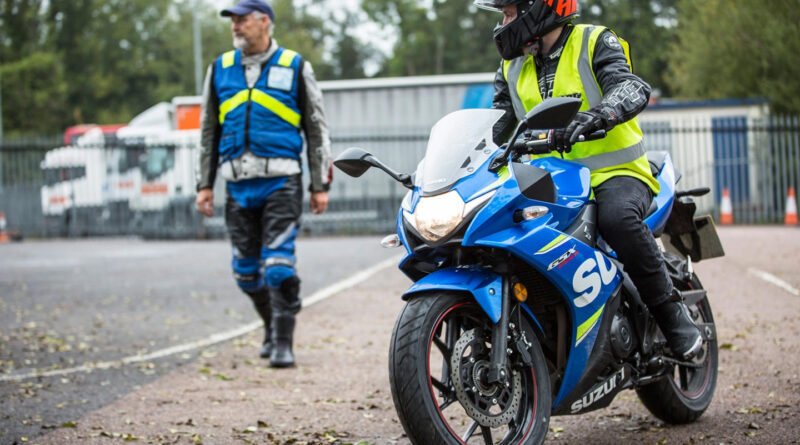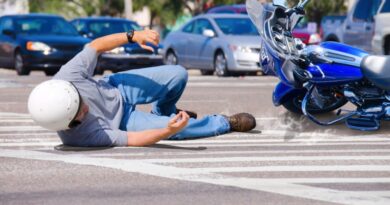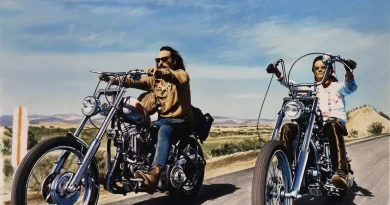Motorcycle Guide: How to U-turn on a Motorcycle
Mastering the art of the dreaded footrest One of the most nerve-wracking aspects of learning to ride a motorcycle is mastering the U turn. Even though it’s far simpler than paddling your bike around, most of us forget how to do it as soon as we pass our test.
As is the case with most things in life, you’ll excel at what you practice often. And if you’re as sluggish as I am, you’ll put off chores until absolutely necessary. Getting up from your big huge as cakes and getting straight into household duties like washing vehicles, mowing lawns, or cleaning windows is a drag since you essentially have to start from zero. Muscle amnesia, rather than muscle memory, describes the current state of affairs.
Furthermore, u-turns are so uncommon and unpleasant that we motorcyclists are prone to forget about them. Sunday rides don’t often require them. Getting to and from work or a friend’s residence doesn’t count either. They are often only necessary if you are not familiar with the area, the road conditions, or the volume of traffic.
Trying to pull off a move that you aren’t very good at is a certain way to embarrass yourself in front of others. If you put your foot down awkwardly, you should expect a less than smooth and proficient dance motion. But imagine we found a way to permanently address this issue.
In a positive turn of events, we actually can. And once you master the technique, it’s as ingrained in your brain as, ahem, riding a bike. A proper turn in the corner is a terrific confidence booster and a great way to keep your cornering abilities sharp.
On a Sunday morning, all you need is your bike, some traffic cones, empty drink cans, or maybe some chalk, and a parking lot without any annoying onlookers. Alternatively, if you don’t want to bother with all of that, you can always just follow the signs posted throughout the parking lot to get where you need to go.
This phase may be skipped by more experienced riders in favor of actual road time. As you probably well know, the presence of additional cars will make driving conditions much more challenging, aggravating, and potentially dangerous.

1. Ride Slowly
A textbook U-turn requires a number of interrelated abilities (so you can save money on a device that rotates your motorcycle in place). One of the first and most crucial of them is slowing down when biking.
Along with low-speed leaning, this is a skill that not many people need to know how to accomplish, so the prospect of learning it might be daunting. It’s a terrific way to enhance your self-assurance and get you to attempt new things without feeling overwhelmed.
To slow down to a walk without risking a stall, you’ll need to rely on your ability to slide the clutch and utilize the back brake (not the front!).
It all depends on your bike’s gearing, torque, throttle map, and weight, but I like to keep the bike moving forward while applying a light touch to the brakes at the back. Although the outcome must be the same.

At a casual strolling pace, you should be able to maintain the bike traveling in a perfectly straight line with very little sway. You are overheating your clutch if you detect a burning odor.
Let the bike cool down and try using more of the back brake. Once you feel confident, set up a slalom and see if you can make it through it at a constant speed without stopping.
2. Setting Up for U-Turn Practice
We’re going to attempt a U-turn right now. It is recommended that you mark out two parallel lines in the area that are roughly 6 meters (20 feet) apart, as this is the arc that most bikes can easily complete.
To put it another way, the distance between rows of parking spaces in a typical parking lot should be about the same as the width of a two-lane road, so that you can practice your turns safely.
If you want to make a u-turn on a public road, you should probably stop your bike first. I think it would be a good idea to do it here, too. Yes, doing so repeatedly will make the entire process more “start and stop,” but in my opinion, you should train your brain to add stopping to the overall process in order to reduce the likelihood that you will be tempted to make a u-turn in front of oncoming traffic without checking.
To ensure that everything is ingrained into muscle memory, a mirror and head check can be incorporated into the process. Whether the turns go clockwise or counterclockwise depends on whether the traffic is moving on the left or right side of the road in your region. Being that we drive on the left side of the road in the Land Downunder, our practice runs will be conducted in a clockwise direction. That’s the way it works in Australia, so it stands to reason that it works the other way around in the United States, Europe, and everywhere else. Extra credit for accomplishing both!

You should practice moving about the area in your mind before we begin the actual turn instruction. The drill will essentially consist of two sets of u-turns separated by a brief period of acceleration and deceleration. Imagine an oval formed by two capital letter “J” forms, one of which has been rotated through 180 degrees.
You’ll be stopping completely, beginning a u-turn by twisting your bike so that it’s facing in the opposite direction, traveling straight for a short distance before momentarily speeding up and breaking, and then repeating the process. Got it? Great! Let’s go straight to work.
3. Doing the U-Turn
If you’ve done the slalom drill well, the most difficult part of this will be starting with the clutch. Feel free to separate the two portions into discrete stages if you aren’t confident both starting and leaning the bike into the u-turn at the same time, but sooner or later you should be able to combine the start and the first lean of the u-turn so that it forms one fluid movement.
The concern here is that your bike will tumble over, which is especially terrifying for a rider who hasn’t practiced u-turns. We’ve all experienced that embarrassing moment as new cyclists when we dropped our bikes while trying to steer them into a parking place or into our garages because the wheels weren’t spinning fast enough to generate the customary centrifugal forces that tend to keep the bike upright.
Don’t worry too much about this. Now that you’re comfortable riding steadily and slowly, all you need to do to feel confident is throw in a turn.

Your best bet is to refrain from standing your ground. You should dab your inner foot instead of dragging it if you feel the bike could go over. Look at where you want the turn to end, adjust the clutch’s friction point in relation to the rear brake, then lean the bike into the bend. You’re not making a sharp bend at high speed, so there’s no need to force the bike to lean excessively.
The bike won’t take much prodding to get going. Even if you feel like you’re “falling” into the turn, trying shifting your weight ever-so-slightly in the opposite direction. Just don’t fight the bike’s turn because you’re worried it will fall. Let it ride. As soon as you grasp it, everything will fall into place.
4. Advanced U-Turn Skills & Drills
You must be thinking this is all beneath you. Are you sure you can do a complete U-turn without any problems? If you want to make sure you’ve got the u-turn down pat, try adding in these extra details.
Reducing the turn’s radius is the first and most evident adjustment. Do this gradually, reducing the radius of the turn as you go, then practice with the current size of the circle until you’ve mastered it.

When you do that (or more likely, while doing that), the steering lock will release. Though they may catch you off guard at first, you’re better off embracing them and testing your turning abilities with the steering locked for the most part of the turn. You’ll also find that your turns might have more speed. As the faster speed of the bike removes the “teetering” sensation experienced at slower speeds, you may find that they are much more stable and comfortable for you.
The true test, though, is to attempt a u-turn in front of your friends and actual traffic on a public road. There are only two possible outcomes here: either you’ll succeed because you’ve practiced and it will now come easily to you, or you’ll fail and wind up putting your foot down and/or seeming like a noob.
If you get it right, you should be proud of yourself. You have accomplished a challenging motorcycle move. And don’t worry too much if you made a mistake. You just require more time spent practicing in the deserted parking lot. Performing a u-turn requires you to cross two lanes of traffic, thus you should only do so if you are completely confident that doing so is safe. Have a good time, and be careful out there.
Bonus Tips: Make your U-turns smoother by doing these tips.
- Discover a private spot, away from prying eyes, and put in some time honing your skills.
- Riding slowly in a straight line and doing slaloms can help you prepare for a U-turn.
- Master the art of sliding the clutch and balancing it against the back brake.
Conclusion
Unlike cars and trucks, motorbikes only have two wheels, so turning them around might cause them to topple over on their sides if you’re not careful. Before attempting a U-turn on the street, it’s smart to get some practice in a parking lot. If you want to do a U-turn, you need to fast guide the bike in and then back out of the desired direction of the turn. To do a U-turn, you should first gaze in the direction you wish to go, and then lean the bike heavily to the outside.



